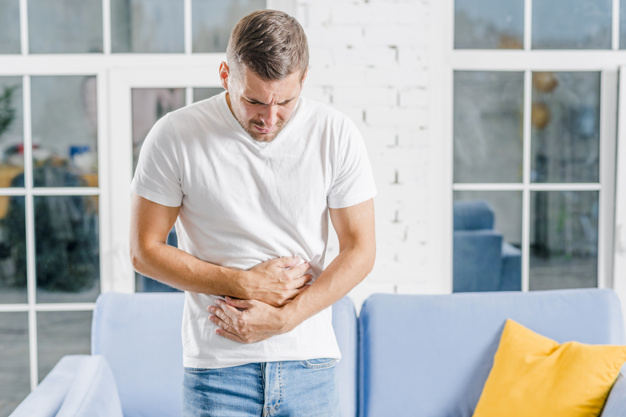How to Deal with Gallstones
“Gallstone” is one of the most common diseases in the biliary system affecting 10 – 15% of general population. The incidence of gallstones is often found in those who are more than 40 years of age, women about 2 – 3 times more than men and those who are overweight or taking medications such as birth control pills or hormone treatment with estrogen. For patients with blood diseases such as thalassemia or other blood disorders which cause red blood cells to break easily, they run a risk of having gallstones at a young age as well.
Dr.Nattaporn Nuanuthai, our general surgeon at Bangkok Hospital Hua Hin shares that if you want to know how gallstones occur, you may have to know about the gallbladder first. The gallbladder is an organ in the biliary tract system which is located in the upper right part of the abdomen. Its function is to store bile which is produced by the liver to help break down fats by working with the enzymes from the pancreas. In certain people who have imbalance of bile compounds, sedimentation may occur leading to a formation of gallstone. There are two main types of gallstones, the cholesterol stones and the pigment stones.

 If you suspect that you may be having gallstones. you may wonder how to find out? To diagnose a patient with gallstones, the doctor will take the information from the patient’s history and physical examinations which include the abdominal examination by ultrasound. In some cases, it may require additional examinations such as CT scan, magnetic resonance imaging (MRI) and gastroscopy.
If you suspect that you may be having gallstones. you may wonder how to find out? To diagnose a patient with gallstones, the doctor will take the information from the patient’s history and physical examinations which include the abdominal examination by ultrasound. In some cases, it may require additional examinations such as CT scan, magnetic resonance imaging (MRI) and gastroscopy.


What are the symptoms of gallstones?
In general, more than half of the patients with gallstones are symptom-free and incidentally detected during an ultrasound abdominal examination or other radiological study. For those who have symptoms, the gallstones can cause series of symptoms ranging from abdominal pain, bloating or distention, heartburn after meals especially when consuming fatty diet. The symptoms also include abdominal pain under the right rib cage or aching at the right shoulder blade area. Patients may have only one or combination of aforementioned symptoms. In addition, patients may seek medical attention when complications occur. The most common complication is the inflammation of the gallbladder called cholecystitis causing constant right upper abdominal pain with fever. Other complications include clogging the bile duct by the gallstone leading to an inflammation of bile duct and hyperbilirubinemia or jaundice. The stone may also dislodge into the pancreatic duct and causes severe abdominal and back pain along with fever. There is also a rare complication from very large gallstones that causes intestinal obstruction. If you suspect that you may be having gallstones. you may wonder how to find out? To diagnose a patient with gallstones, the doctor will take the information from the patient’s history and physical examinations which include the abdominal examination by ultrasound. In some cases, it may require additional examinations such as CT scan, magnetic resonance imaging (MRI) and gastroscopy.
If you suspect that you may be having gallstones. you may wonder how to find out? To diagnose a patient with gallstones, the doctor will take the information from the patient’s history and physical examinations which include the abdominal examination by ultrasound. In some cases, it may require additional examinations such as CT scan, magnetic resonance imaging (MRI) and gastroscopy.
When to treat gallstones?
For patients with gallstones who have symptoms or when complications occur, the surgery to remove the gall bladder is recommended as a definite treatment which can prevent possible, serious complications. In patients who are symptom-free, surgery may not be recommended at the time but patients are required to monitor the symptoms in case the gallstones progress or complications occur.How to treat the gallstones?
Currently, there is no clinically proven evidence to treat gallstones by taking medication aiming to dissolve the stones. Therefore, the treatment of gallstones is cholecystectomy which is a surgical procedure to remove the whole gallbladder where the gallstones are located. Currently, the technique called laparoscopic cholecystectomy is considered standard and widely popular. The surgical instruments are inserted through small incisions in the abdomen proven to have faster recovery time and less post-operative pain. For traditional surgery, so-called open cholecystectomy, is still used in patients with severe complications from gallstones after being assessed as unsafe to undergo laparoscopic surgery. In some patients with complications from gallstones in the gallbladder. They are required to receive antibiotics to control the infection, or other treatments such as endoscopy to remove the stones in the bile duct before undergoing the gallbladder removal surgery.